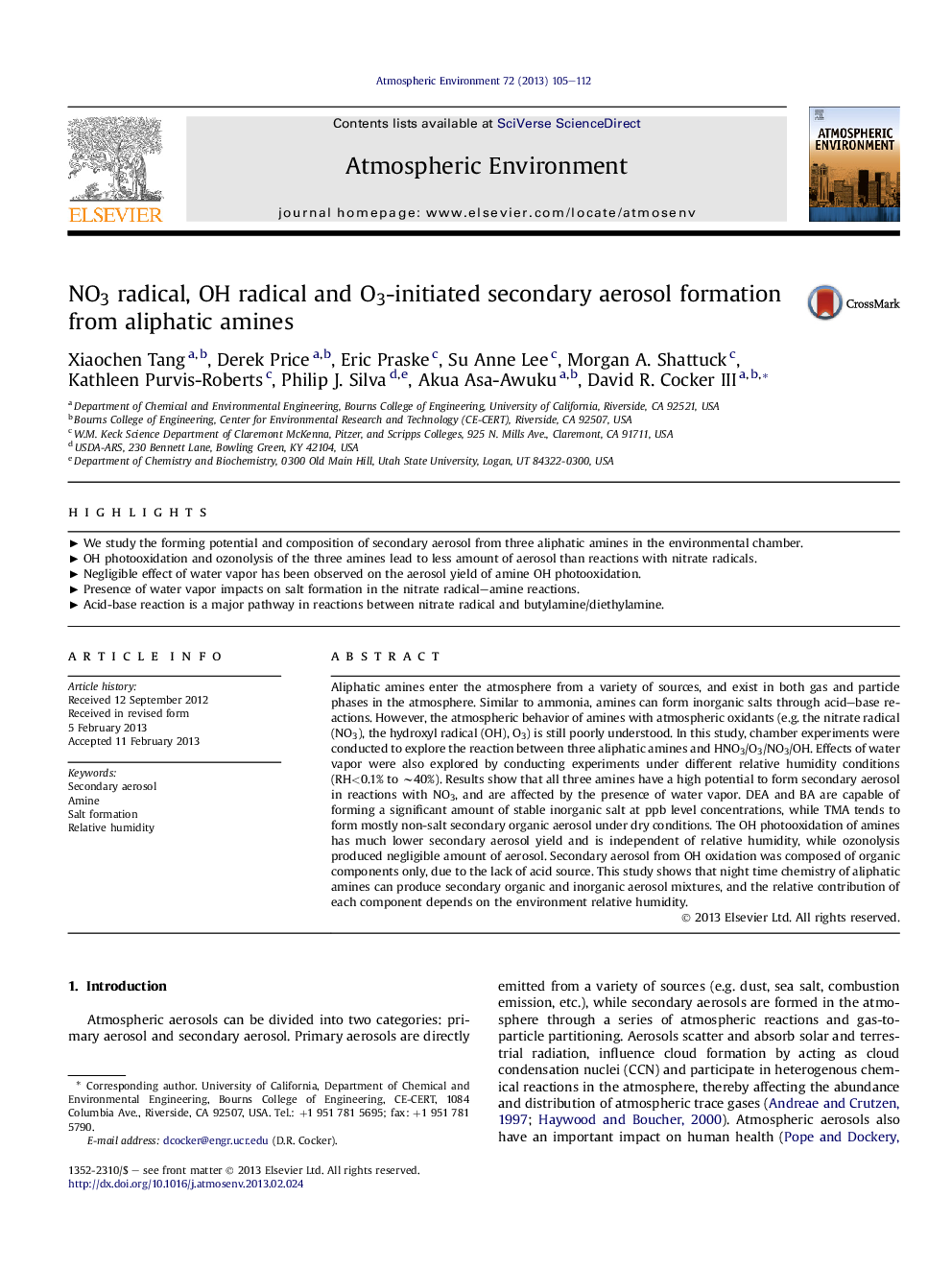| Article ID | Journal | Published Year | Pages | File Type |
|---|---|---|---|---|
| 4438338 | Atmospheric Environment | 2013 | 8 Pages |
Aliphatic amines enter the atmosphere from a variety of sources, and exist in both gas and particle phases in the atmosphere. Similar to ammonia, amines can form inorganic salts through acid–base reactions. However, the atmospheric behavior of amines with atmospheric oxidants (e.g. the nitrate radical (NO3), the hydroxyl radical (OH), O3) is still poorly understood. In this study, chamber experiments were conducted to explore the reaction between three aliphatic amines and HNO3/O3/NO3/OH. Effects of water vapor were also explored by conducting experiments under different relative humidity conditions (RH<0.1% to ∼40%). Results show that all three amines have a high potential to form secondary aerosol in reactions with NO3, and are affected by the presence of water vapor. DEA and BA are capable of forming a significant amount of stable inorganic salt at ppb level concentrations, while TMA tends to form mostly non-salt secondary organic aerosol under dry conditions. The OH photooxidation of amines has much lower secondary aerosol yield and is independent of relative humidity, while ozonolysis produced negligible amount of aerosol. Secondary aerosol from OH oxidation was composed of organic components only, due to the lack of acid source. This study shows that night time chemistry of aliphatic amines can produce secondary organic and inorganic aerosol mixtures, and the relative contribution of each component depends on the environment relative humidity.
► We study the forming potential and composition of secondary aerosol from three aliphatic amines in the environmental chamber. ► OH photooxidation and ozonolysis of the three amines lead to less amount of aerosol than reactions with nitrate radicals. ► Negligible effect of water vapor has been observed on the aerosol yield of amine OH photooxidation. ► Presence of water vapor impacts on salt formation in the nitrate radical–amine reactions. ► Acid-base reaction is a major pathway in reactions between nitrate radical and butylamine/diethylamine.
